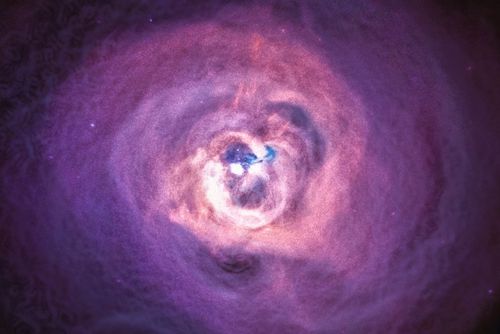Julie Hlavacek-Larondeau is an associate professor in the Department of Physics at the University of Montreal
Credit: Center for Research in Astrophysics Québec
A new space telescope called XRISM X-ray imaging and spectroscopy missionIt was launched on September 6 by the Japan Aerospace Exploration Agency and its collaborators NASA, the Canadian Space Agency and the European Space Agency.
This newcomer to interstellar space mission is studying the most extreme phenomena in the universe, including black holes, dying stars and the hot plasma that surrounds galaxies, which is often violent and produces intense heat.
Thanks to the participation of NASA and the support of the Canadian Space Agency, Canadian researchers are participating in this mission. Two professors from Saint Mary’s University and the University of Waterloo are part of the scientific team responsible for testing and calibrating two instruments built into the space telescope, a spectrometer and an X-ray imager.
For her part, Julie Hlavacek Larrondeau, professor of astrophysics at the University of Montreal, is participating in the mission as a guest scientist. She does not hide her enthusiasm: “We, together with the global scientific community, are on the verge of finding answers to many of our questions. “The data collected by XRISM will not only advance our quest to understand the deep entanglements of the universe, but will also allow new discoveries about the most mysterious phenomena in the universe, including the famous black holes, which I have been studying since the beginning of my career.”
The XRISM telescope’s mission is truly ambitious: we want to unravel the mysteries of extreme cosmic events by observing celestial sources that emit X-rays: black holes, neutron stars, galaxies and galaxy clusters. X-rays are a form of high-energy light that is invisible to the naked eye and is largely absorbed by our atmosphere, hence the need to use space telescopes to analyze them. The Resolve X-ray spectrometer, provided by NASA and mounted on the XRISM telescope, will measure the energy emitted by light particles.
Analysis of X-ray emissions from these sources promises to provide fundamental insights into the fundamental physical processes that govern these unusual environments.
In the heart of the Perseus galaxy group
“As a guest scientist at NASA, my focus is on a critical mission target: the Perseus Cluster, a group of about 190 galaxies located 250 million light-years from Earth, in the constellation Perseus,” says Julie Hlavacik-Larondo. “The amount of X-rays it emits makes it one of the brightest clusters we know of.”
She continues: “With my research team, we also aim to shed light on the mysterious massive black hole located at the heart of the Perseus cluster. In 2003, NASA revealed that gas surrounds the planet.” This black hole emitted sound waves. By combining data to be collected by XRISM and other telescopes, we hope to reveal some of the secrets hidden within this mysterious cosmic sonic core.

“Hardcore beer fanatic. Falls down a lot. Professional coffee fan. Music ninja.”







More Stories
Martin Freeman stopped being a vegetarian after 38 years
MS-DOS 4.0 source code release: What a story!
It is better to preserve food without preservatives, but with yeast